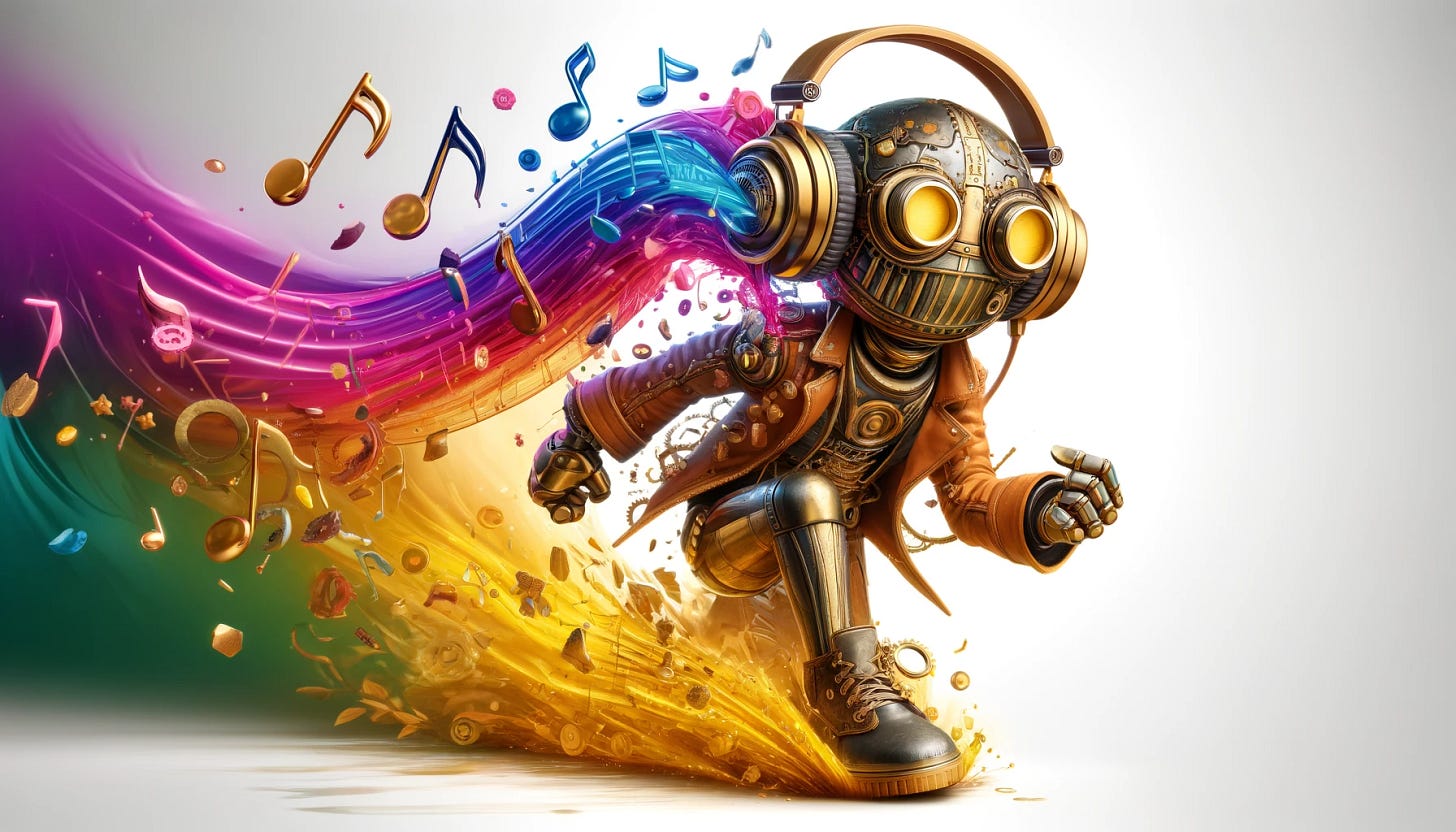AI Music Apps Will Eat The World
On the text-to-everything fever that plagues Silicon Valley
By now you’ve surely listened to some Suno and Udio songs. In case you haven’t, here’s what could be this blog’s theme: “Oh, AI! Do you promise you’ll be kind to us and won’t just throw us under the bus?” Fun.
Anyway, we don’t know much about these AI music apps except that they let you create songs from text. You can input a description, a style, and the lyrics—seemingly a lot, but not really—and it outputs a sample. But making music goes well beyond style and lyrics; it’s a complex activity that requires a broad skill set: knowing composition, production, perhaps some theory, background on genres and authors, and surely a good ear, among many other things I can’t possibly know as I’m no musician.
What Suno and Udio provide is a means to outsource the skills you’re missing—just like you can outsource thinking and writing to ChatGPT—in exchange for losing control over the creations.
That’s the wonder of the text-to-X trend (doesn’t sound that well, though). Everyone knows how to write a prompt but almost no one knows how to make music (or images or video for that matter). This trend is powerful but produces a rather unsettling feeling that grows the further you move away from text. As Nikhil Thorat says, text-to-music, in contrast to text-to-text, “is completely missing the point.” His reasons: Music can’t be distilled into a text prompt. Now I get why they say “a picture is worth a thousand words”; a symphony is worth a couple thousand at least.
This “undistillability” of music is what creates a huge gap between musicians and listeners. Same thing with visual artists and art enjoyers. It’s also what makes the text-to-X framework both so appealing to the general public and so saddening for artists who know what’s being lost in translation (and overall, a terrible mutilation of creativity).
The trend has proliferated in the generative AI space anyway. As I see it, the potential success of AI music has two big implications.
Keep reading with a 7-day free trial
Subscribe to The Algorithmic Bridge to keep reading this post and get 7 days of free access to the full post archives.


